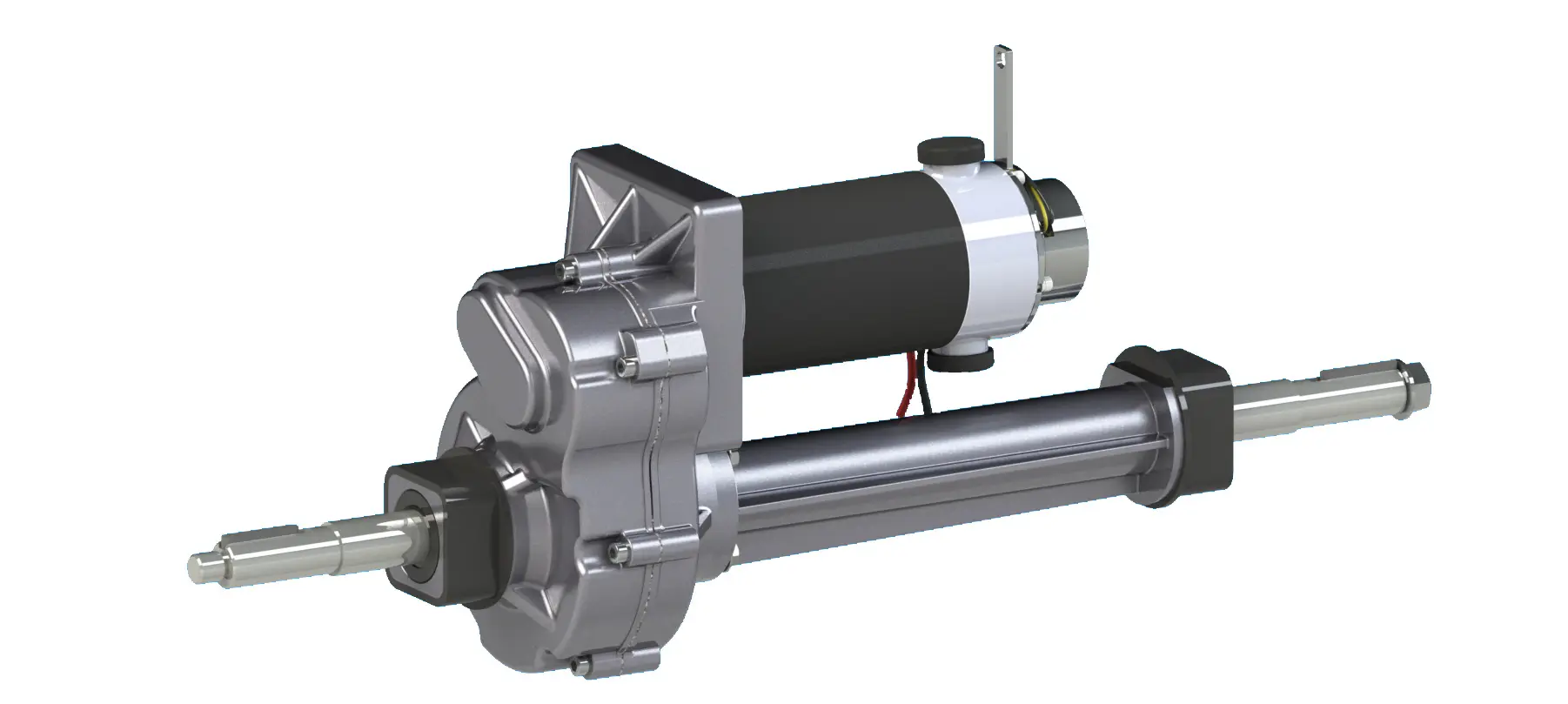What is an Electric Transaxle?
Introduction
In the rapidly evolving world of automotive technology, the electric transaxle has emerged as a critical component in the transition towards electric vehicles (EVs). An electric transaxle, also known as an e-transaxle or e-axle, is a highly integrated system that combines an electric motor, transmission, and differential into a single unit. This integration offers numerous advantages in terms of efficiency, performance, and space utilization, making it a cornerstone of modern electric vehicle design
Definition and Components
An electric transaxle is essentially a compact, integrated drivetrain system designed for electric vehicles. It typically includes the following key components:
Electric Motor: This is the heart of the electric transaxle, responsible for converting electrical energy into mechanical energy to drive the vehicle. Modern electric motors are highly efficient and can operate at various speeds and torque levels
Transmission: While traditional internal combustion engine vehicles require complex transmissions to manage different speeds and torque requirements, electric transaxles often use simpler transmissions. Some designs incorporate multi-speed gearboxes to optimize performance across a range of speeds
Differential: The differential allows the wheels to rotate at different speeds, which is essential for turning. In an electric transaxle, the differential can be integrated with the motor and transmission to create a compact and efficient drivetrain
.
Control Systems: Advanced control systems manage the power delivery and torque distribution, ensuring optimal performance and efficiency. These systems can include electronic control units (ECUs) that monitor and adjust various parameters in real-time
How Does an Electric Transaxle Work?
The electric transaxle operates by integrating the electric motor directly with the transmission and differential. When power is supplied to the motor, it generates torque, which is then transferred through the transmission to the differential. The differential distributes the torque to the wheels, allowing the vehicle to move
One of the key advantages of this design is its ability to provide immediate torque, which is a characteristic of electric motors. This results in rapid acceleration and smooth driving dynamics. Additionally, the compact nature of the electric transaxle allows for more efficient packaging within the vehicle, freeing up space for other components such as batteries
Applications and Use Cases
Electric transaxles are used in a wide range of applications, from passenger cars to commercial vehicles and even specialized off-road machines. Here are some specific use cases:
Passenger Cars
In passenger cars, electric transaxles are used to provide efficient and responsive driving experiences. For example, Tesla’s vehicles utilize advanced electric transaxles that combine high-performance motors with sophisticated control systems to deliver exceptional acceleration and handling
Commercial Vehicles
Commercial vehicles, such as buses and trucks, benefit from the high torque and efficiency of electric transaxles. Companies like BYD and Proterra have developed electric buses that use integrated electric transaxles to improve fuel efficiency and reduce emissions
Off-Road and Industrial Machinery
Electric transaxles are also used in off-road vehicles and industrial machinery, where their robustness and high torque output are advantageous. For instance, electric excavators and forklifts can leverage the benefits of electric transaxles to enhance performance and reduce operational costs
Real-World Case Study: The GM ‘Voltec’ 4ET50 Multi-Mode Electric Transaxle
One of the most notable examples of an electric transaxle in action is the GM ‘Voltec’ 4ET50 Multi-Mode Electric Transaxle. This transaxle was developed for use in hybrid and electric vehicles, such as the Chevrolet Volt
The 4ET50 transaxle features a unique design that allows it to operate in multiple modes, optimizing performance and efficiency. It combines two electric motors with a planetary gear set and a clutch system, enabling seamless transitions between electric and hybrid modes
In electric mode, the transaxle provides pure electric driving with zero emissions. When the battery charge is low, the transaxle can switch to hybrid mode, using the internal combustion engine to generate electricity and extend the vehicle’s range
This innovative design has been instrumental in the success of the Chevrolet Volt, offering drivers a smooth and efficient driving experience while minimizing environmental impact
Industry Trends and Future Developments
The electric transaxle market is experiencing significant growth, driven by the increasing adoption of electric vehicles and advancements in automotive technology. Here are some key trends and future developments to watch:
Integration and Modular Design
As the industry evolves, electric transaxles are becoming more integrated and modular. This allows for greater flexibility in vehicle design and the ability to adapt to different vehicle platforms and power requirements. For example, some manufacturers are developing modular e-axle systems that can be easily customized for various applications
Multi-Speed Transmissions
While single-speed transmissions are common in electric vehicles, there is a growing interest in multi-speed transmissions for electric transaxles. These can improve efficiency and performance, particularly at higher speeds. However, the integration of multi-speed transmissions presents challenges in terms of packaging and thermal management
Advanced Cooling Systems
As electric transaxles become more powerful and compact, effective cooling systems are essential to maintain performance and reliability. Advanced cooling technologies, such as oil cooling and liquid cooling systems, are being developed to manage heat effectively
Cost Reduction and Economies of Scale
One of the main challenges in the electric transaxle market is reducing costs to make electric vehicles more affordable. As production volumes increase and manufacturing processes become more efficient, economies of scale will help drive down costs
Conclusion
The electric transaxle represents a significant advancement in automotive technology, offering numerous benefits for electric vehicle performance and efficiency. As the industry continues to innovate and develop new solutions, electric transaxles will play a crucial role in shaping the future of transportation. Whether in passenger cars, commercial vehicles, or specialized machinery, the electric transaxle is poised to revolutionize the way we drive and work
By understanding the capabilities and potential of electric transaxles, businesses and consumers can make informed decisions about the adoption of electric vehicles and the technologies that power them. As the transition to electric mobility accelerates, the electric transaxle will undoubtedly remain at the forefront of automotive innovation
Post time: Jan-10-2025


